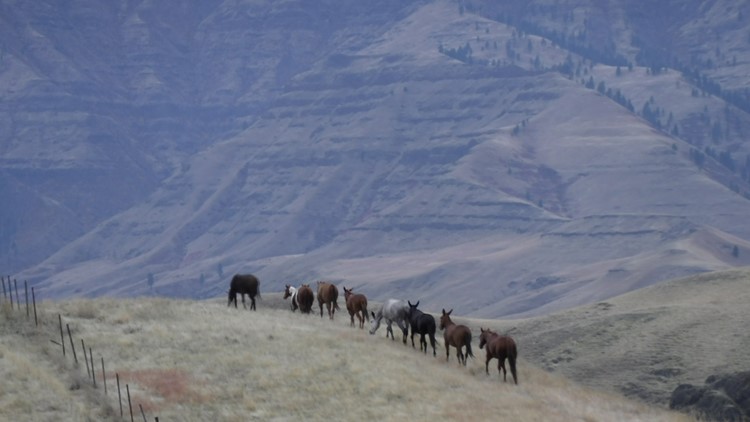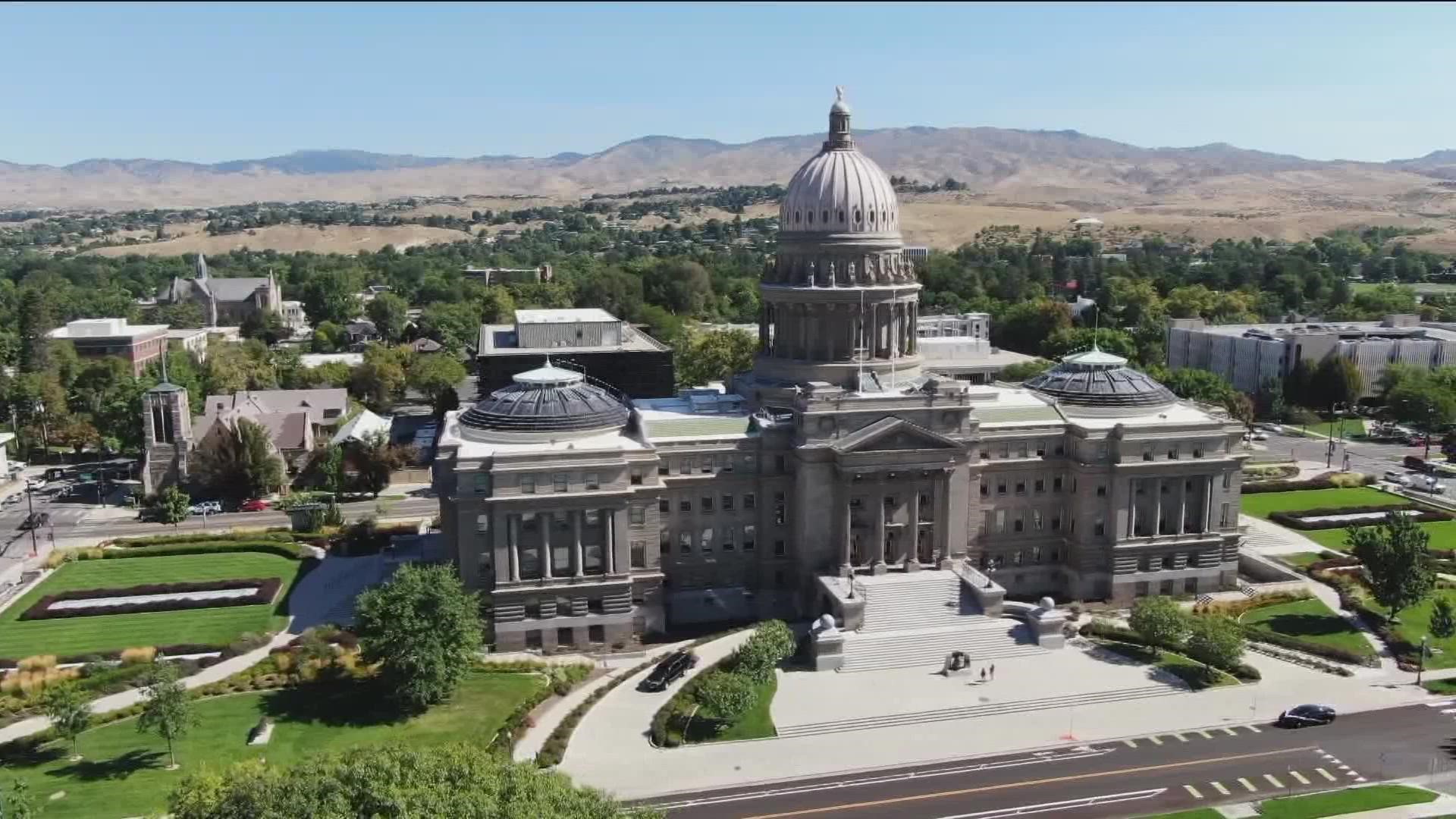KAMIAH, Idaho — This article originally appeared in the Idaho Press.
During the spring, summer, and fall, Forest Service mules work packing culverts, tools, and supplies into the backcountry under the supervision of their human handlers.
It’s hard work.
”(They’re) moving about 2-3 miles an hour at a sustained pace which is faster then their natural pace,” said Special Uses Coordinator (and mule handler) Sean Santolin. Santolin has worked with mules and horses in the South Zone of the Nez Perce-Clearwater National Forests for 14 years and has grown to know the mules personally.
“You get to know what they are thinking without using words. They’ll let you know what they’re thinking and what they do and don’t like,” he said
For instance, Santolin says one mule he works with “will regularly steal apples out of your saddlebag if you’re not looking” while others have strong preferences for certain places in the pack string.
This time of year, the mules take a break for the winter. Prior to their vacations, the mules get some special attention.
“We will deworm them one last time before we turn them out. They get a haircut with mechanical clippers to keep burrs and seed heads out of their manes. We’ll pull their shoes and trim their feet and roll the edges on their hooves to prevent them from chipping,” Santolin said.
During their break, the mules largely roam unsupervised over an 2,800 acre pasture in Hells Canyon.
“Their routine is unstructured and it’s up to them. They get to be back in their natural environment doing what they would do without our intervention,” Santolin said. “And they don’t have any responsibilities besides grazing and enjoying their pasture.”
During their winter, the pack divides their labor to survive and thrive as a team.
“The older animals that know where the water is, but there will be others that look for predators without any help from us,” Santolin said. “One of the nice things about where we winter them is that they have good grazing, they don’t trammel an area, and they move to seek feed in the steep canyon.”
It’s clear that these mules look forward to their winter break.
“I think they really enjoy being turned out on the Snake,” Santolin said. “They’re always really excited when you take them out. You’re always holding them back from a full out run. They want to go, they know it’s their winter break and they’re not going to work for a while and they enjoy it.”
Most Forest Service mules and horses in this region spend their time at Nine Mile in the Lolo National Forest, where they are under supervision and more confined than the animals in Hells Canyon. The lucky animals who get to spend their winter break not only get the freedom of their large range, but they also enjoy a healthy diet of bunchgrasses, which is higher in nutrients than the hay they would eat in a stock facility.
Their large and rugged range in Hells Canyon also keeps them in peak condition for the working season.
“The animals’ health when they come out of pasture is 10-times better than if they are in a feedlot just standing around and eating hay,” Santolin said. “They are ready to work at the end of the winter. They retain their muscles, and you need little work to get them back on the job. They’re still in the element they’re in when they’re working in the summer. They retain the knowledge about shifting their body, navigating steep hillsides, and crossing creeks. Their feet are in good shape and don’t need as much foot maintenance.”
After a winter in Hells Canyon, “they come out in great shape, tuned up and ready to go and hit trail!”
This article originally appeared in the Idaho Press, read more on IdahoPress.com.
Watch more Local News:
See the latest news from around the Treasure Valley and the Gem State in our YouTube playlist:
HERE ARE MORE WAYS TO GET NEWS FROM KTVB:
Download the KTVB News Mobile App
Apple iOS: Click here to download
Google Play: Click here to download
Watch news reports for FREE on YouTube: KTVB YouTube channel
Stream Live for FREE on ROKU: Add the channel from the ROKU store or by searching 'KTVB'.
Stream Live for FREE on FIRE TV: Search ‘KTVB’ and click ‘Get’ to download.



